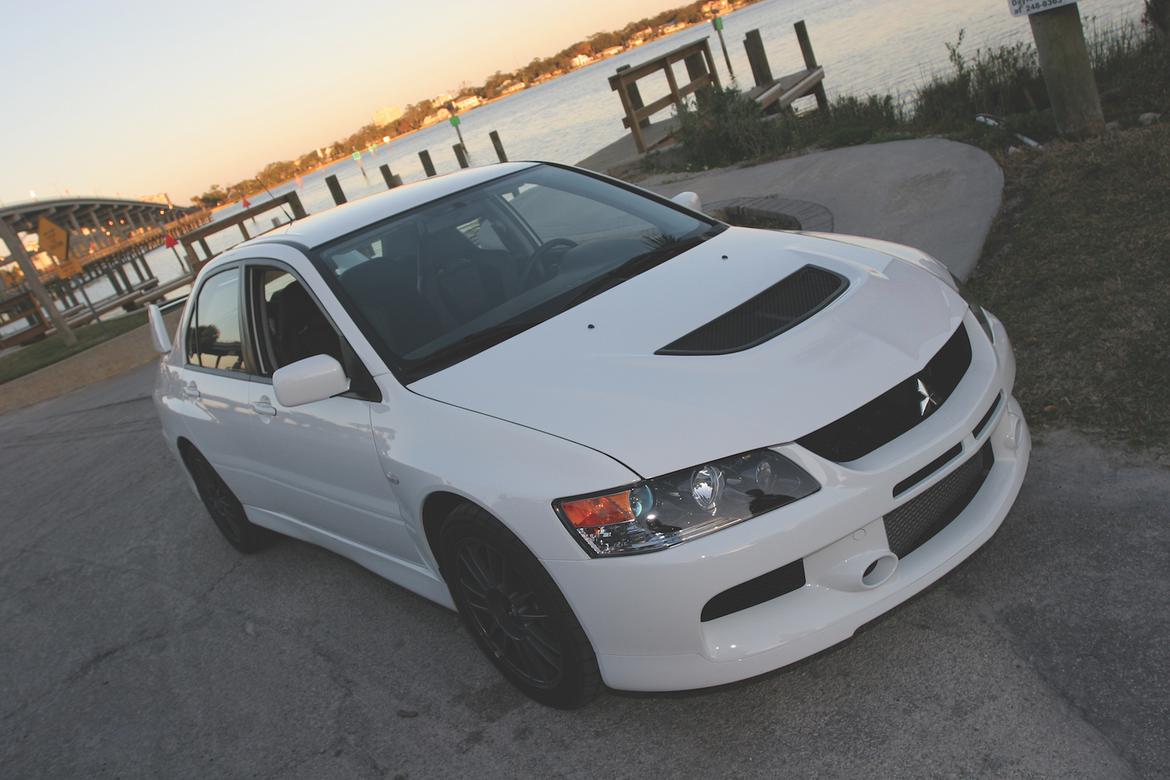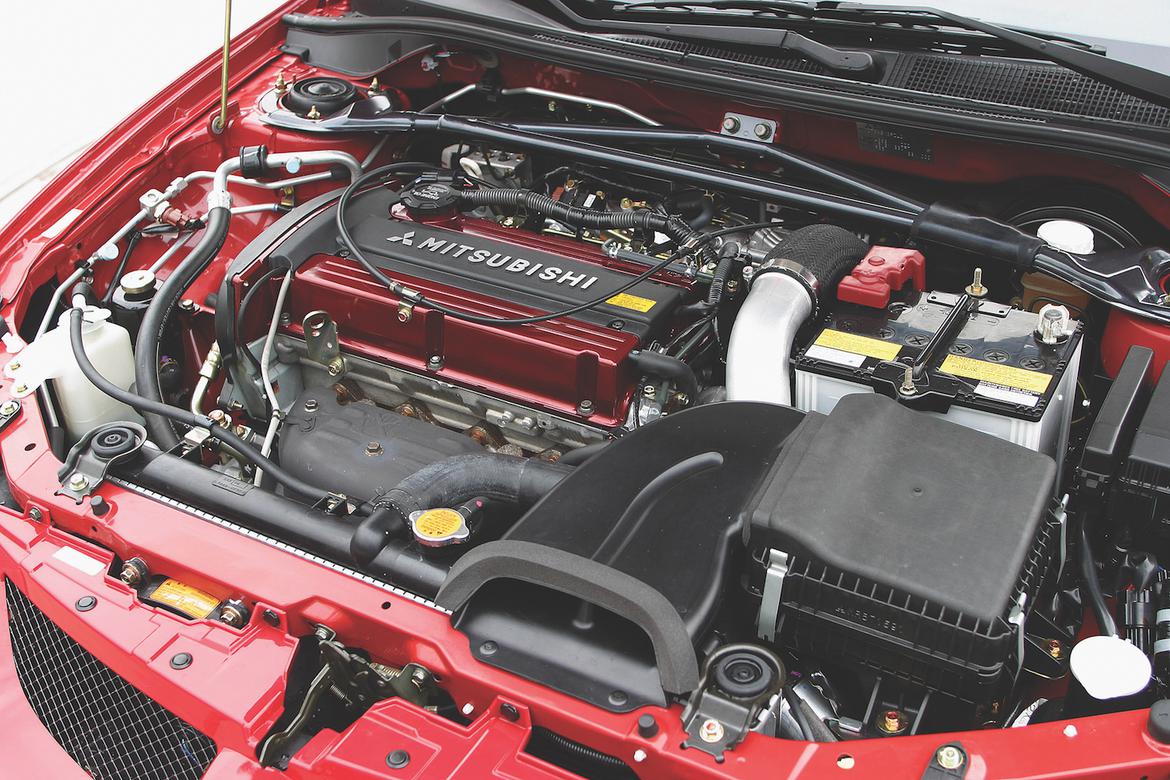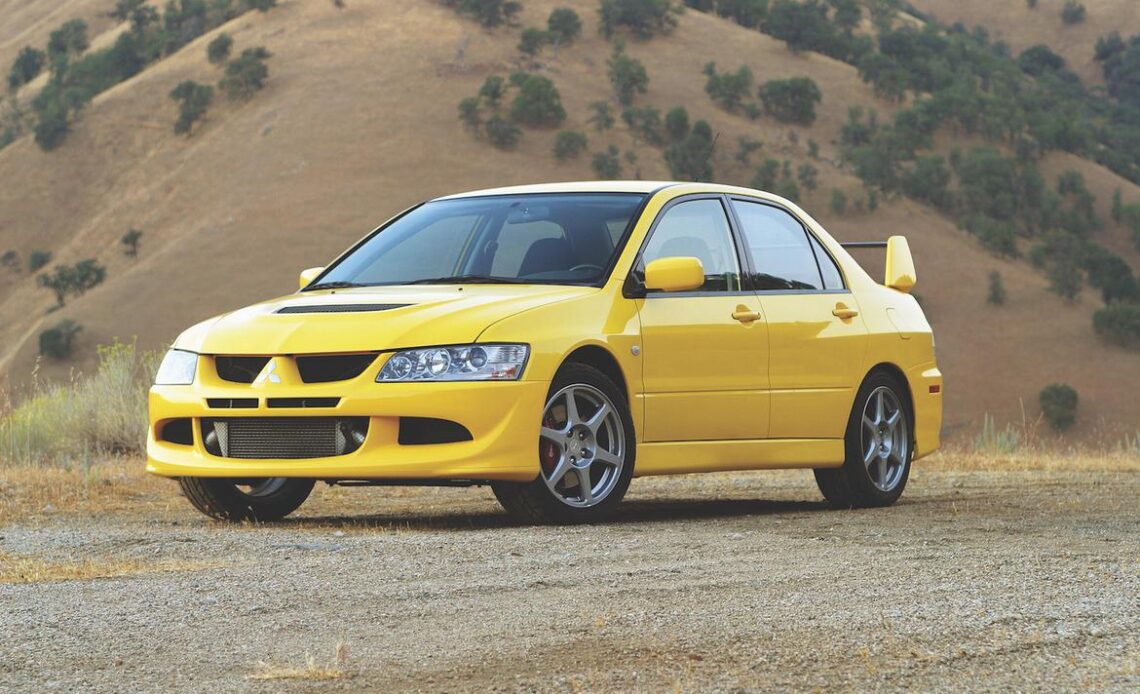[Editor’s Note: This article originally appeared in the April 2009 issue of Grassroots Motorsports.]
You’ve seen it in cartoons: A feud is sparked, leading one character to threaten another with a gun. His nemesis quickly puts him to shame by pulling out an even bigger pistol. The two continue this game of one-upmanship, drawing ever larger and more threatening artillery until …
Origin of Life
The Evo was truly a race car for the street. A thin veneer of modern interior fabrics, audio equipment, and electronic comforts couldn’t conceal its racing DNA; few true street cars before or since have had the same kind of raw, competitive nature.
The WRX might have come here first, but the Evo had more of an edge. Even though it was the tuner generation’s answer to Shelby, Yenko and the like, it was more comfortable and civilized than many expected. It was also far from slow, easily clocking 13-second quarter-mile runs and approaching 1g of lateral grip in stock trim.

Identifying a Mitsubishi Lancer as a high-powered Evolution is easy, even if the car lacks the big rear wing. The Evo sports a big intercooler, a hood vent and large Brembo brakes. Photography Credits: Courtesy Mitsubishi (Yellow Evo), David S. Wallens (White Evo)
While the Evo VIII was new to American drivers, it wasn’t as revolutionary when viewed on the world’s stage. Sure, it was a fast car, but Japanese buyers had enjoyed access to its all-wheel-drive progenitors since the early 1990s; Europeans had their pick of Evos since the middle of the decade.
In fact, the Evo’s performance credentials were firmly planted in the soil of late-1980s technology: The American-market Galant VR-4 was the source of the first Evo’s drivetrain, and the basic ingredients had not changed since. Also, the top-tier, U.S.-built Mitsubishi Eclipse, Plymouth Laser and Eagle Talon models had nearly identical drivetrains to the early Evo and followed parallel evolutionary paths.
The Evo’s venerable 4G63T powerplant was long a legend in both the U.S. and foreign markets and the iron-block and aluminum DOHC head engine displaced 1997cc during its entire run. However, by the time the first U.S. Evo appeared, output had been cranked up to an astounding 280-plus horsepower.

The venerable 4G63T 2-liter engine was coaxed up to 276 horsepower thanks to more than 20 psi of turbo…
Click Here to Read the Full Original Article at Grassroots Motorsports Online Articles…

